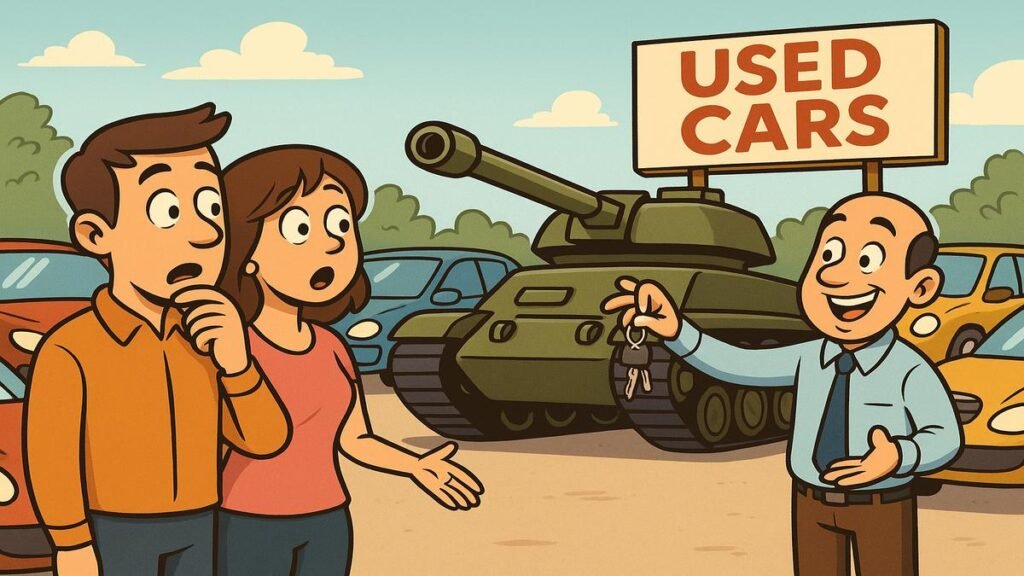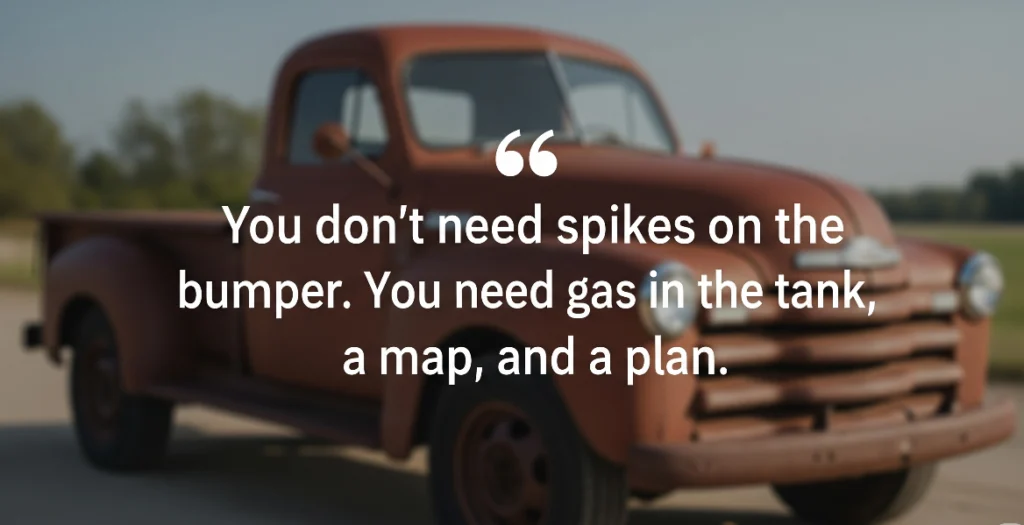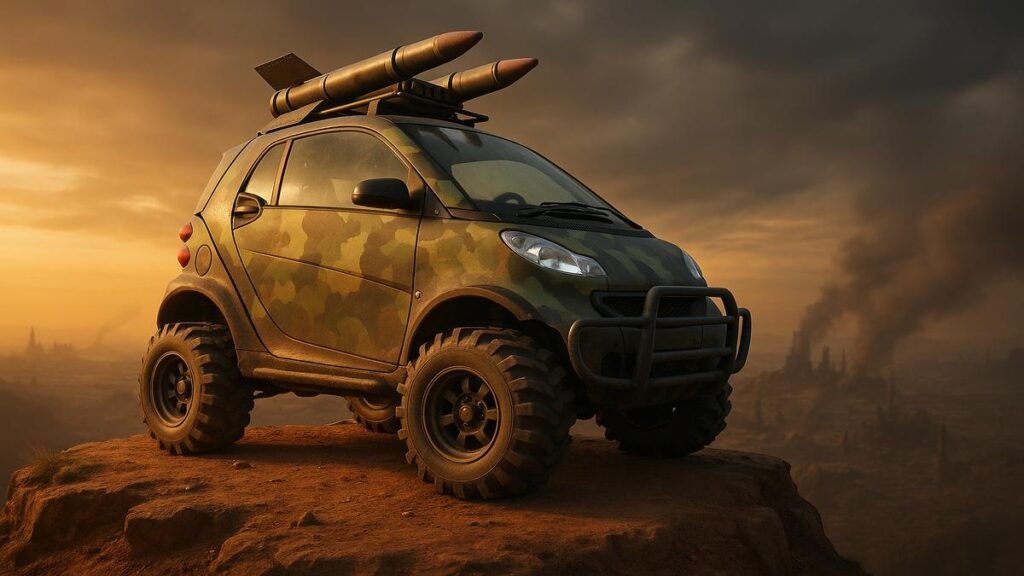Prep your ride for doomsday without looking like you raided a movie set. Real tips for real people.
There’s a certain allure to the idea of roaming the wasteland in a rust-covered tank with spikes on the fenders and a flamethrower mounted to the roof. But unless your day job involves chasing bandits through a sandstorm, you probably don’t need to go full Mad Max.
For most of us, apocalypse-proofing a vehicle isn’t about turning your Camry into a war rig. It’s about smart upgrades, realistic planning, and resisting the urge to cover everything in camouflage netting.
So whether you drive a sensible hatchback or a beat-up SUV, here’s how to prep your vehicle for when society decides to take a long, indefinite coffee break.
🚙 1. Choose a Vehicle That Isn’t a Diva
Not all cars are built for survival. The best bug-out vehicles are:
- Mechanically simple
- Durable
- Fuel-efficient
- Common enough that parts are easy to scavenge
If your vehicle needs a software update to unlock the trunk, it’s not ideal.

🛠️ 2. Perform Pre-Apocalypse Maintenance
Your vehicle might be the lifeline that gets you out of Dodge. But not if it dies from preventable causes.
Here’s your apocalypse prep maintenance checklist:
- Change the oil (and store extra)
- Replace aging belts, filters, hoses
- Keep tires in good condition and rotate them
- Replace the battery every few years
- Keep a spare key in a coded magnetic box
This isn’t sexy. It’s not tactical. But neither is breaking down in front of an angry mob.
🧰 3. Build a Vehicle Emergency Kit (No, Not Just a Flashlight)
A real bug-out kit lives in your vehicle 24/7. It doesn’t need to look like a scene from a military surplus catalog, but it should cover:
- Water and purification tablets
- Non-perishable food (granola bars, MREs)
- First-aid kit
- Small tent or emergency shelter
- Reflective mylar blankets
- Multitool and duct tape
- Jumper cables
- Compact shovel
- Phone charger (solar or 12V)
- Gloves, hat, blanket
- Basic tools
- Cash in small bills
- Local and regional paper maps
You’re not trying to survive for a month in the Yukon — just to get to your next fallback point.
🧭 4. Know Multiple Routes — And Practice Them
It’s tempting to rely on your GPS, but if the grid’s down or traffic’s jammed, your Waze app is just a glowing brick.
Keep printed maps of your city, region, and potential escape corridors. Know alternate routes that avoid:
- Highways
- Major choke points
- Bridges and tunnels
Once a season, practice your escape route. Yes, really. Bring the kids. Make a day of it. Call it “Family Apocalypse Rehearsal Day.” Ice cream afterward is mandatory.
🧼 5. Ditch the Tactical Overkill (Unless You Enjoy Being a Target)
It’s one thing to be prepared. It’s another to paint a neon sign on your car that says, “Loot me, I’m fully stocked!”
Avoid:
- Obvious weapon mounts
- Giant “Zombie Outbreak Response Team” decals
- External jerry cans unless you’re actually in the wild
- Flashy mods that draw attention
Blend in. Look like a vehicle someone would pass by — not fight over.
🛢️ 6. Fuel Strategy: Don’t Let the Tank Drop Below Half
You can’t outrun danger on fumes. Adopt the “Half Tank Rule”:
- Never let your gas drop below 50%
- Store fuel safely at home (with stabilizer)
- Keep a spare 5L can in the trunk — rotate monthly
Fuel scarcity is one of the first real pain points in any disruption. Don’t be the one siphoning from a stranger’s mower at midnight.
🔑 7. Don’t Forget the Human Factor
The real goal isn’t to make your car invincible. It’s to make sure you can use it effectively under stress.
- Can your spouse start it? Change a tire? Navigate?
- Can you fix a minor issue in the dark?
- Can you pack it fast if you’ve got five minutes to flee?
Run through mock drills. The more your family practices, the more your vehicle becomes a tool — not a liability.
💬 Final Thoughts: The Car Is Just the First Move
Your vehicle is a bridge to safety, not a fortress. Once you’re out, where are you going? What happens if roads are blocked? What’s Plan B?
Don’t stop at the tires. Plan the full journey.





